Have you ever heard of Nadan Mambazha Kuzhambu? It’s a traditional South Indian curry that brings together the tangy sweetness of ripe mangoes with a rich blend of spices, tamarind, and even a hint of coconut. Think of it as an authentic mango kuzhambu, a homemade dish that perfectly captures the essence of South Indian cuisine. Every spoonful of this tangy mango curry delivers a delicate balance of sweet, spicy, and sour flavors, making it a cherished classic during mango season and a true celebration of culinary heritage.
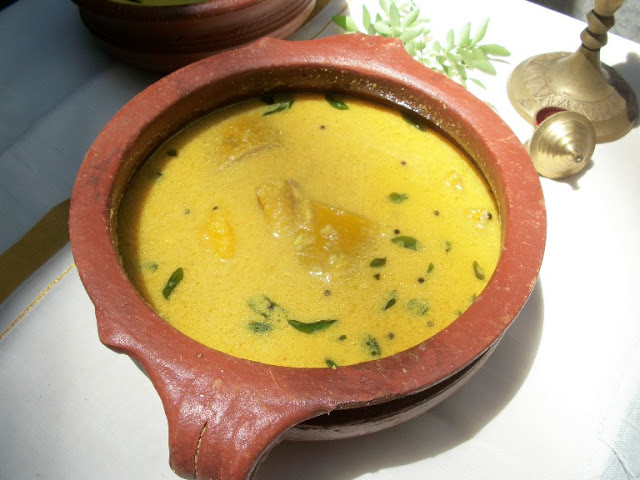
Nadan Mambazha Kuzhambu Recipe
Last Sunday I made Mambazha Pachadi, Eggplant fry , Kadala theeyal and this one. And it was a total hit except one thing. The thing is I made mambala pachadi and mambala kulambu at the same day
Jump to:
Mambala pachadi is a thicker form of this gravy and has some extra special things. But both is a kind of similar ones. But everyone loved it and finished the entire thing. Pineapples, mangoes taste even great when cooked in the right form. This is one of those kind of dish. It comes straight from Kerala. And you all know that Kerala dishes are the best ones. This dish is not an exceptional. It proved it uniqueness. Amma actually sipped this gravy rather than eating it. This gravy has a sweeter tone rather than spicy taste.
About Nadan Mambazha kuzhambu
Nadan Mambazha Kuzhambu is more than just a curry - it’s a taste of Kerala’s summer kitchens. With the sharp tang of raw mangoes, mellowed by creamy coconut and a gentle tempering of mustard, curry leaves, and red chilies, it’s a dish that speaks of simple, honest cooking.
Perfect for those craving raw mango recipes, traditional Kerala dishes, or a light South Indian mango curry, this kuzhambu brings warmth to the table. Popular as Kerala mango curry, Nadan mambazha kuzhambu, or mango curry with coconut, its a beloved staple during mango season and a reminder that the best flavors often come from what’s already in your kitchen.
The other day, I found two raw mangoes tucked in the veggie basket, forgotten after a weekend market run. That familiar sour smell brought back memories of summer lunches at Ammachi’s, where mambazha kuzhambu was always the star.
Similar Recipes

Why this recipe work?
Seasonal flavor at its best: Raw mango adds natural tanginess without needing tamarind. Itss fresh, bright, and beautifully balanced.
Minimal ingredients, maximum taste: You don’t need a long list of spices, just coconut, chilli, turmeric, and a classic tempering is enough.
Why I love this recipe - You know those recipes that just feel right? This is one of them. It’s not fancy, not fussy, just simple, honest food that somehow tastes like a hug in a bowl. Every time I make it, I think of Ammachi, the clinking of bangles as she stirred the pot, and the smell of mango and coconut wafting through the house. I love that it doesn’t take much, just a few ingredients and barely any time. And yet, it brings so much comfort. On days when I don’t know what to cook (or feel too lazy to think), this kuzhambu always shows up like an old friend.
Quick and comforting: Comes together in under 30 minutes, making it perfect for busy days or lazy afternoons.
Versatile pairing: Whether it’s hot rice, dosa, or even idiyappam, this curry plays well with everything.
Nostalgic touch: For many, this dish brings back memories of summer holidays and meals at home, adding an emotional layer to every bite.
Ingredients
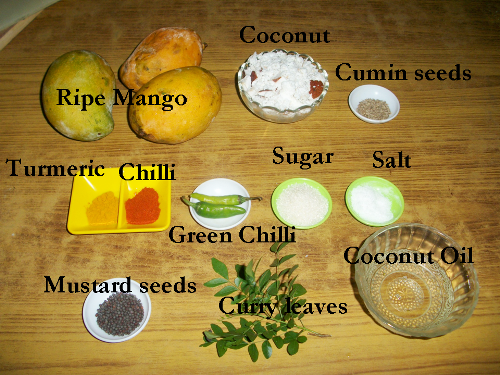
Ripe Mango: The star of the dish. Ripe mangoes bring a natural sweetness and soft texture that melts into the curry, adding a fruity depth that’s both refreshing and comforting.
Turmeric Powder (Manjal Podi): This golden spice adds more than just color, it brings a gentle earthiness and warmth, along with its natural healing properties. A staple in almost every South Indian dish. Red Chilli Powder: For that subtle heat and beautiful red hue. It enhances the overall flavor without overpowering the delicate sweetness of the mango.
Green Chilli: Slit and added whole, green chillies bring a sharp, bright kick to the curry. They balance the sweetness of the mango without turning the dish too spicy.
Sugar: Just a little is enough to bring all the flavors into harmony. It highlights the mango’s sweetness and softens any sharp edges from the spices. Salt ties everything together, making each ingredient shine in its own way.
Coconut: Freshly grated coconut is the soul of this curry. It makes the gravy creamy, rich, and oh-so-comforting. It also cools the heat from the chillies, giving the curry that mellow finish.
Cumin Seeds: These tiny seeds bring a gentle, nutty flavor that complements both the coconut and the mango. It adds just enough depth without taking over the dish.
Coconut Oil: Used for tempering, coconut oil adds authenticity and a beautiful aroma that instantly reminds you of Kerala kitchens. Mustard Seeds: They add a slight crunch and a pop of flavor. Curry Leaves: Fresh curry leaves are the final fragrant note. They add a burst of herbal flavor and complete the tempering with that signature South Indian touch.

Hacks
- Go for firm, slightly sour raw mangoes. If mangoes are too ripe then the curry turns sweet; If it is too green, it might get overly sharp.
- Soak the mango slices, a 5–10 minute soak in warm salted water helps soften them evenly while cooking.
- A silky coconut paste makes the curry richer and blends beautifully into the kuzhambu.
- If your mango is extra sour, add a pinch of jaggery to mellow it out without losing the tang.
- Temper right at the end, Adding the mustard, curry leaves, and chilies as a final touch gives that perfect Kerala-style finish.
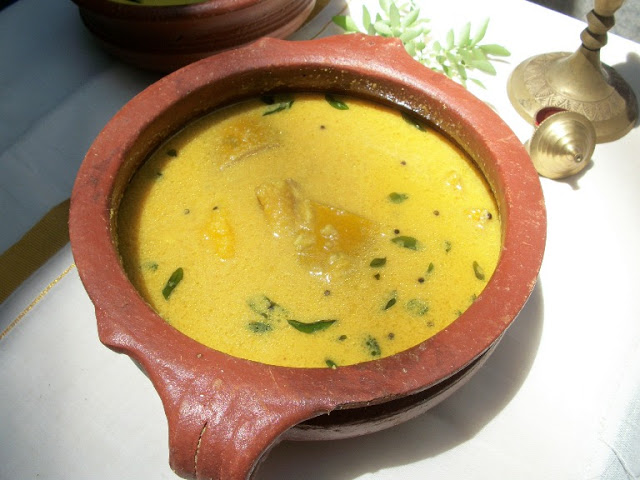
Mambazha Kuzhambu (Step by Step)
 |
| Take all your ingredients |
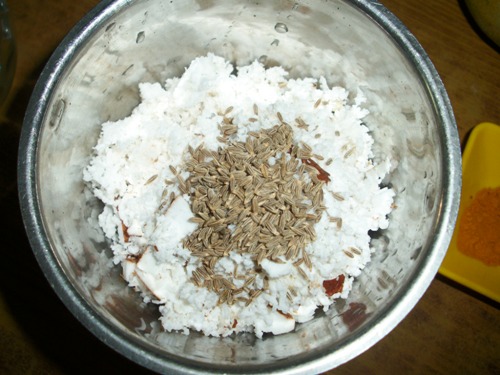 |
| Take coconut and cumin seeds in a blender |
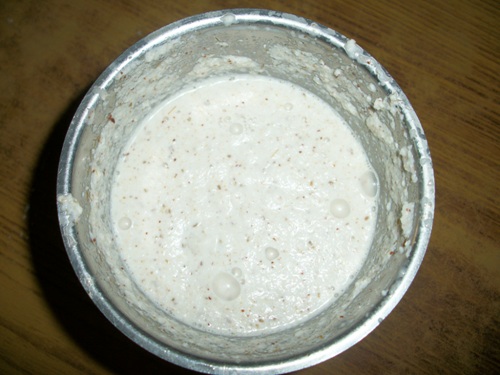 |
| make it into a fine paste |
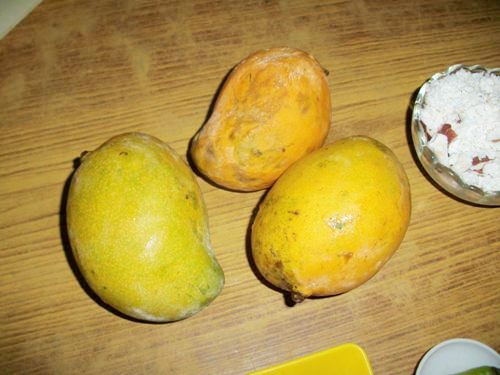 |
| Take your ripe mangoes (Over Ripe will work too) |
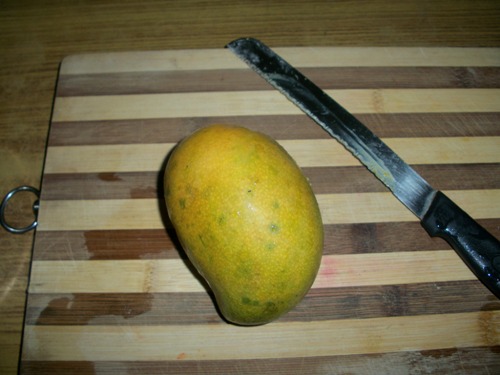 |
| Mangoes ready to cut |
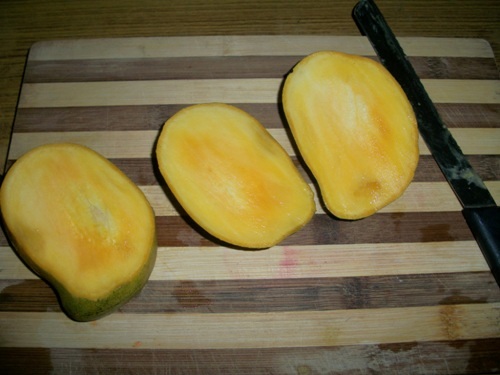 |
| Cut it open |
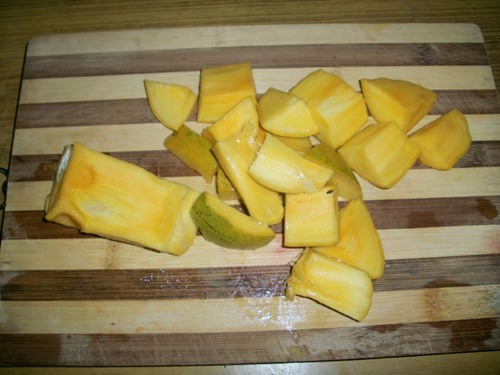 |
| chop it up |
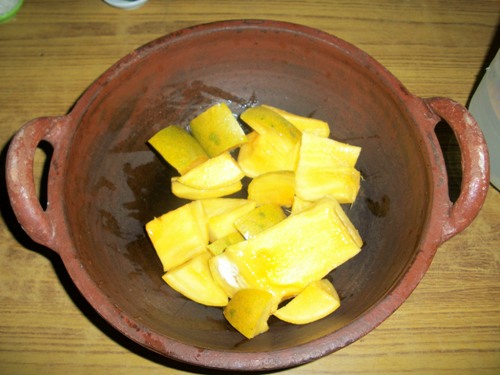 |
| add it to a kadai |
 |
| pour in water |
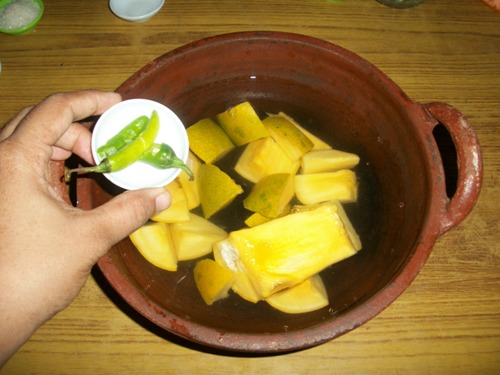 |
| add in green chilli |
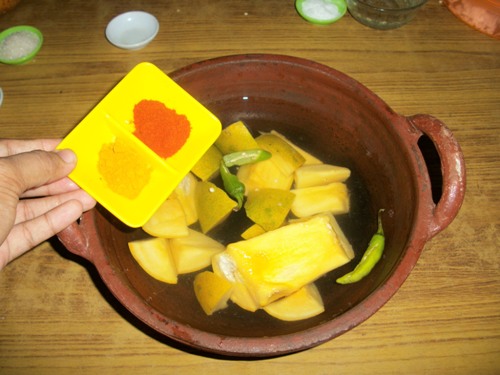 |
| turmeric and chilli powder |
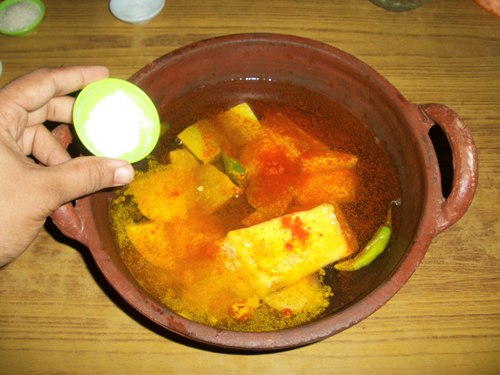 |
| season with salt |
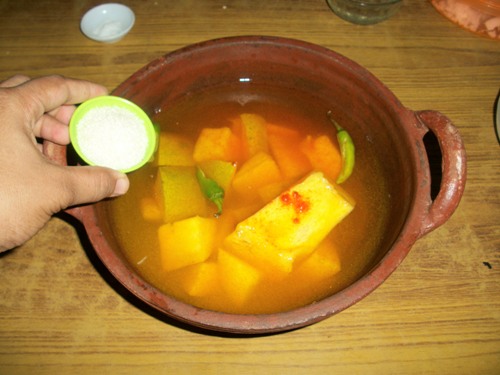 |
| and some sugar..This enhances the sweetness of this dish |
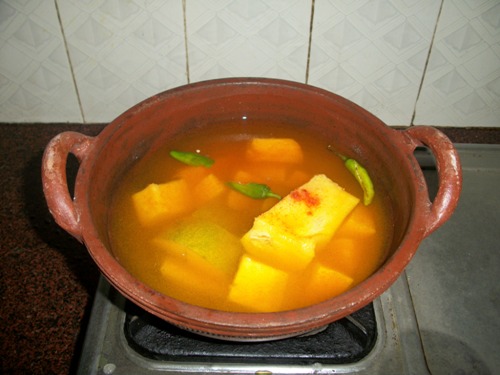 |
| heat it up |
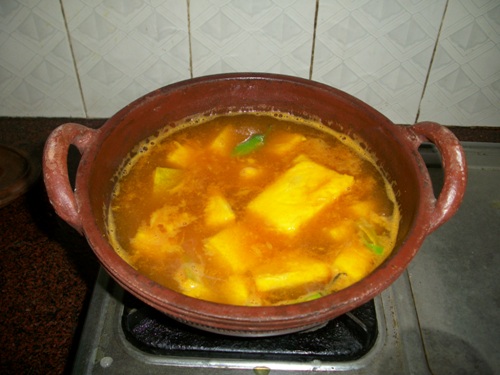 |
| Bring that to boil and cook it till the mangoes are cooked |
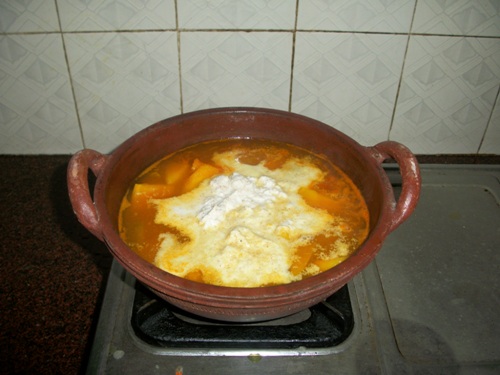 |
| add in coconut paste |
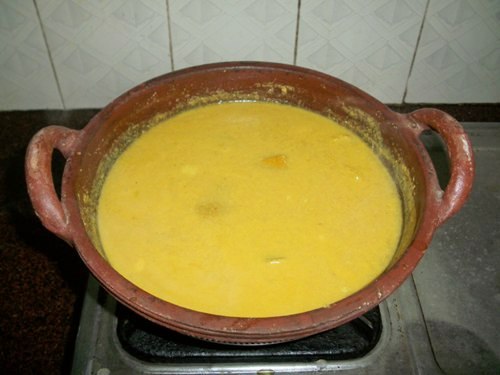 |
| and simmer for 5 mins |
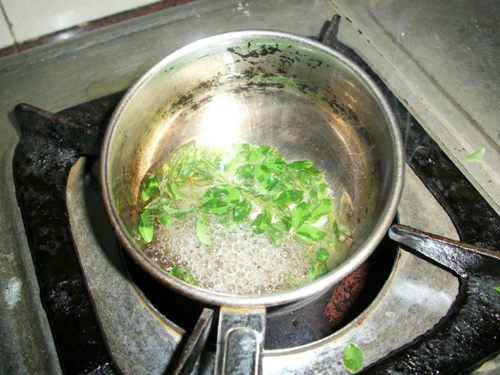 |
| make seasoning |
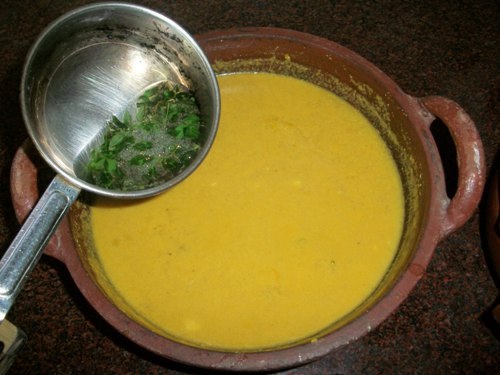 |
| and pour it over the curry |
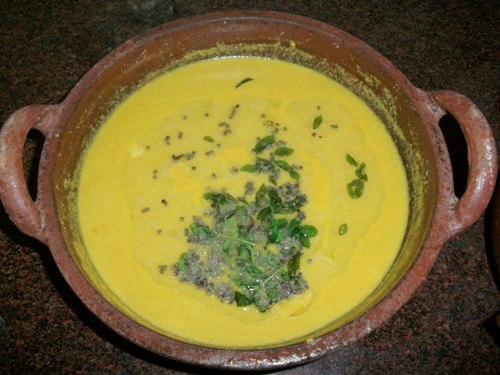 |
| mix well |
 |
| Serve |
Expert tips
- Don’t skip the coconut oil: It gives the curry its traditional Kerala flavor and aroma. Regular oil won’t offer the same depth.
- Let it rest before serving: Give the curry 15-20 minutes after cooking to let the flavors meld.
- Avoid over-stirring: Mangoes are soft and can break apart. Stir gently to keep chunks intact for a better texture.
- Make ahead-friendly: It tastes even better the next day, so you can cook it early and reheat gently when needed.
Serving Suggestions
Serve hot with steamed rice, papadam, and a dollop of ghee if you’re feeling indulgent. A simple thoran or upperi on the side turns this into a full, nostalgic Kerala meal.
Variations
Mambazha Puliserry: This traditional Kerala curry blends the sweetness of ripe mangoes with the tang of yogurt and the richness of coconut. Its creamy, comforting, and full of southern charm, usually served with steamed rice and crispy papadams on a hot afternoon.
Mambala Kadi: A rustic summer-special curry from Tamil kitchens, Mambala Kadi is made using sun-dried mango pulp. It’s tangy, slightly smoky, and beautifully seasoned with a coconut- cumin base, often served with rice during mango season.
Mango Pachadi: A classic Vishu or Tamil New Year dish, Mango Pachadi is a celebration of all six tastes - sweet, sour, bitter, salty, spicy, and astringent. Made with jaggery, raw mango, mustard seeds, and neem flowers, it’s not just a dish, but a symbolic part of tradition.
Maa Vathal Kuzhambu: This tangy and spicy tamarind-based curry is spiked with sun-dried mango pieces (maa vathal), which add bursts of sourness. It’s a bold, flavorful dish that pairs beautifully with hot rice and a dollop of ghee.
FAQ
1. Can I use raw mango instead of ripe mango?
You can, but the flavor profile will change. Raw mango will make the curry tangier and less sweet. Ripe mangoes give that perfect balance of sweetness and spice.
2. What kind of mango works best for this recipe?
Use firm, ripe mangoes that are sweet but not overly soft. Varieties like Banganapalli or Imam Pasand work well, but any local ripe mango with good flavor will do.
3. Is this curry spicy?
Not too spicy. It has a mild heat from green and red chillies, but the sweetness from mango and creaminess from coconut mellow it out.
4. Can I skip the coconut?
Coconut gives the curry its creamy base and traditional Kerala flavor. If you want to skip it, try using a little cashew paste or yogurt, but it will taste quite different.
5. What do I serve it with?
Plain steamed rice is the classic choice. It also pairs well with idiyappam or dosa for a twist.
6. How long does it keep?
It stays good in the fridge for up to 2 days. In fact, it often tastes better the next day as the flavors deepen.
7. Can I freeze it?
Freezing isn’t recommended, as the coconut and mango texture might change. Fresh is best for this dish.
8. Can I add dal or lentils to this curry?
Traditionally, no. But if you’re looking to add protein, a little cooked toor dal can be stirred in, just know it becomes more like a sambar-style curry.
More Kuzhambu Recipes
📖 Recipe Card
Nadan Mambala Kuzhambu Recipe | Ripe Mango Kuzhambu Recipe
Equipment
- Cooking pot
- Blender
Ingredients
- 2 large Ripe Mango chopped
- 1 tsp Turmeric powder
- 1 tsp Red Chilli Powder
- 2 no Green chilli slit
- 1 tbsp Sugar
- Salt to taste
For Grinding
- 1 cup Fresh Coconut grated
- 1 tsp Cumin seeds
For Tempering
- 1 tbsp Coconut Oil
- 1 tsp Mustard seeds
- 1 sprig Curry leaves
Instructions
- Grind Coconut with cumin seeds to a smooth paste by adding some water.
- Add chopped mangoes along with the seed in a kadai. Pour in 3 cups of water. Add in turmeric powder, chilli powder, green chillies, salt and sugar in it. Bring this to boil. Cook for 10 mins or until the mangoes are cooked.
- Add in the ground masala in this and mix well. Simmer for 5 mins.
- Now make tempering heating oil and add in mustard seeds and curry leaves. Pour this over the gravy and mix well. Serve hot with rice.
Video

Notes
- Don’t skip the coconut oil: It gives the curry its traditional Kerala flavor and aroma. Regular oil won’t offer the same depth.
- Let it rest before serving: Give the curry 15-20 minutes after cooking to let the flavors meld.
- Avoid over-stirring: Mangoes are soft and can break apart. Stir gently to keep chunks intact for a better texture.
- Make ahead-friendly: It tastes even better the next day, so you can cook it early and reheat gently when needed.
Serving Suggestions
Serve hot with steamed rice, papadam, and a dollop of ghee if you’re feeling indulgent. A simple thoran or upperi on the side turns this into a full, nostalgic Kerala meal.Nutrition
If you have any questions not covered in this post and if you need help, leave me a comment or mail me @[email protected] and I’ll help as soon as I can.
Follow me on Instagram, Facebook,Pinterest ,Youtube and Twitter for more Yummy Tummy inspiration.




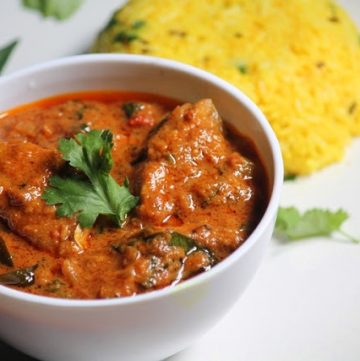
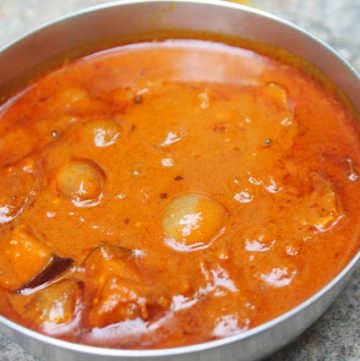
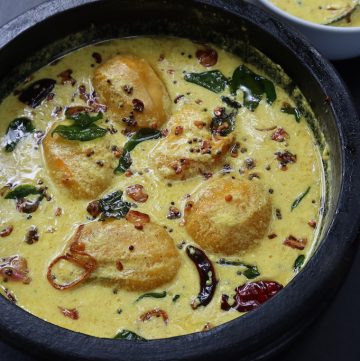
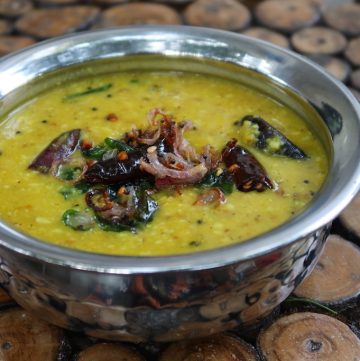


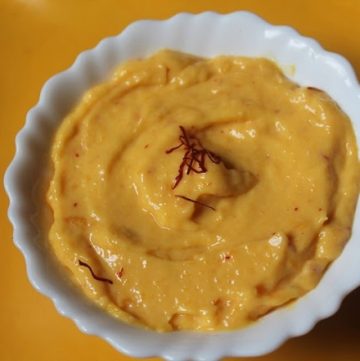
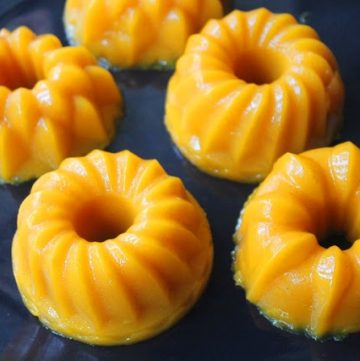
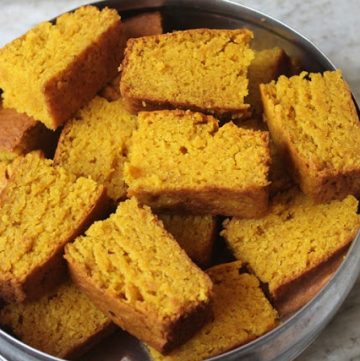
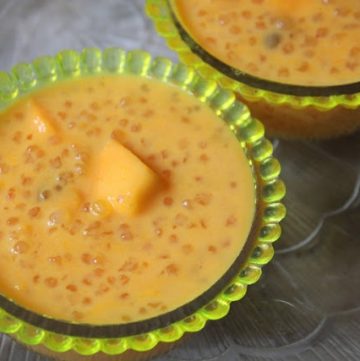
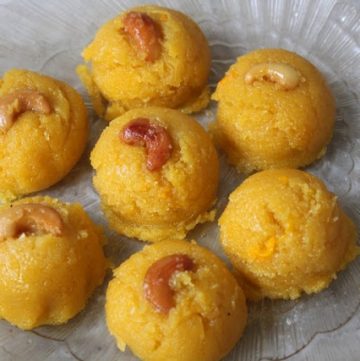
vijaya
Hi Aarthi,
I have been following your blog for quite some time. All your recipes are very good and your presentation is very creative. Your clay kadai is very cool. Keep up the good work.
Aruna Manikandan
sounds new to me...
ur step by step pictures makes it very simple .
Thx. for sharing 🙂
jeyashrisuresh
tangy and yummy curry.nicely done
leela thomas
H Arathi, very nice recipe.
I add some thick beaten sour curd at the end ,be sure not to boil after adding the curd.
this will give u a sweet sour taste, n we call mambazha pulisseri.
just shared my version of doing it
thank u so much
leela
Manoj Kumar
Thanks Yummy Tummy I love ur blog...
it always helps me when my mom is not at home
Manoj Kumar
Thanks Yummy Tummy I love ur blog...
it always helps me when my mom is not at home